We went sailing yesterday. Actual sailing-with sails up and engine off. For the first time in 3 months. It was pretty satisfying. Okay, it was REALLY satisfying-nothing broke. I think, finally, we’re ready for real.
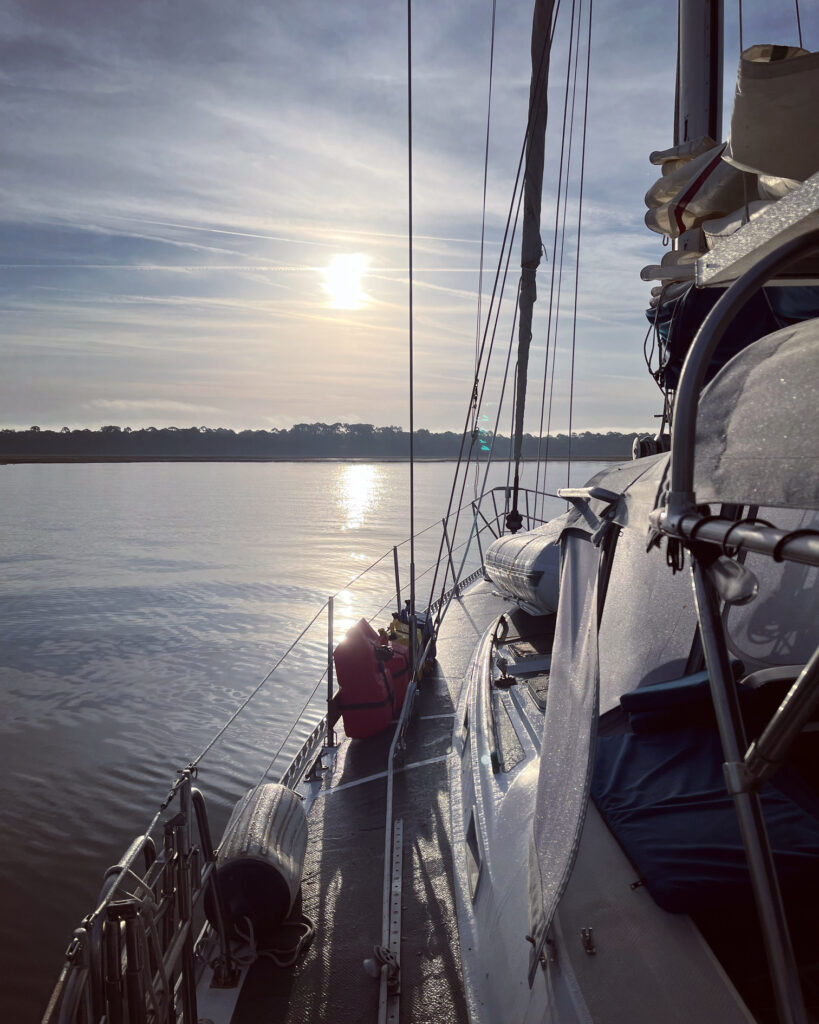
We actually left dock on Friday. First we did some docking and maneuverability practice in the marina, because there was no wind. Kim docked the boat for the first time! She did great. She hated it, but she did great. Then we went out into St. Simon’s Sound. There was very little wind, but we did sail for a few minutes just to get the sails up and make sure everything was still connected. We spent the night at anchor, which, apart from wake from a few passing ships, was pretty uneventful. Then yesterday, we went out into the ocean and SAILED!
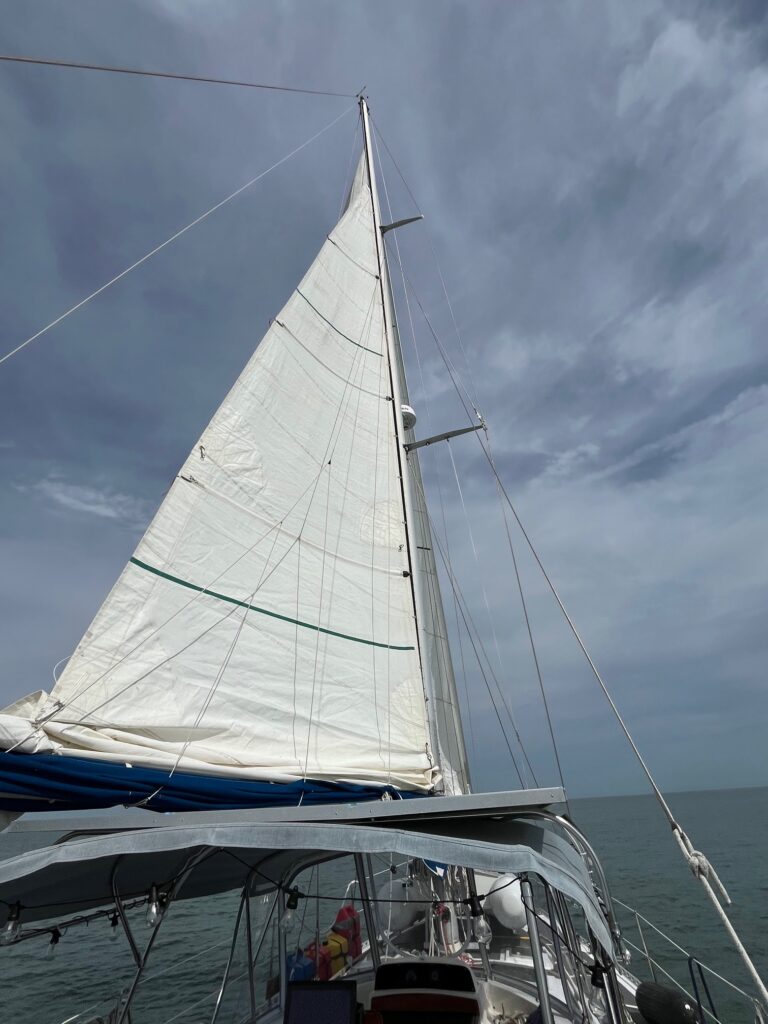
There were a few things we had never tested before that we needed to make sure are working before we actually leave, so that was the primary mission. First up: reefing. Reefing is an absolute must for safety-it’s a way to reduce the sail area of the boat in strong winds so the boat isn’t overpowered. Kim and I had rigged reefing lines for the mainsail months ago but never tried them out. Shockingly, they worked fine and the process was actually pretty easy. Of course, the wind was pretty light, but still! Mainsail reefing is the more complicated one because we have to go up to the mast to do it. Reefing the genoa is easy-we just roll it up a little from the cockpit. So, reefing: check.
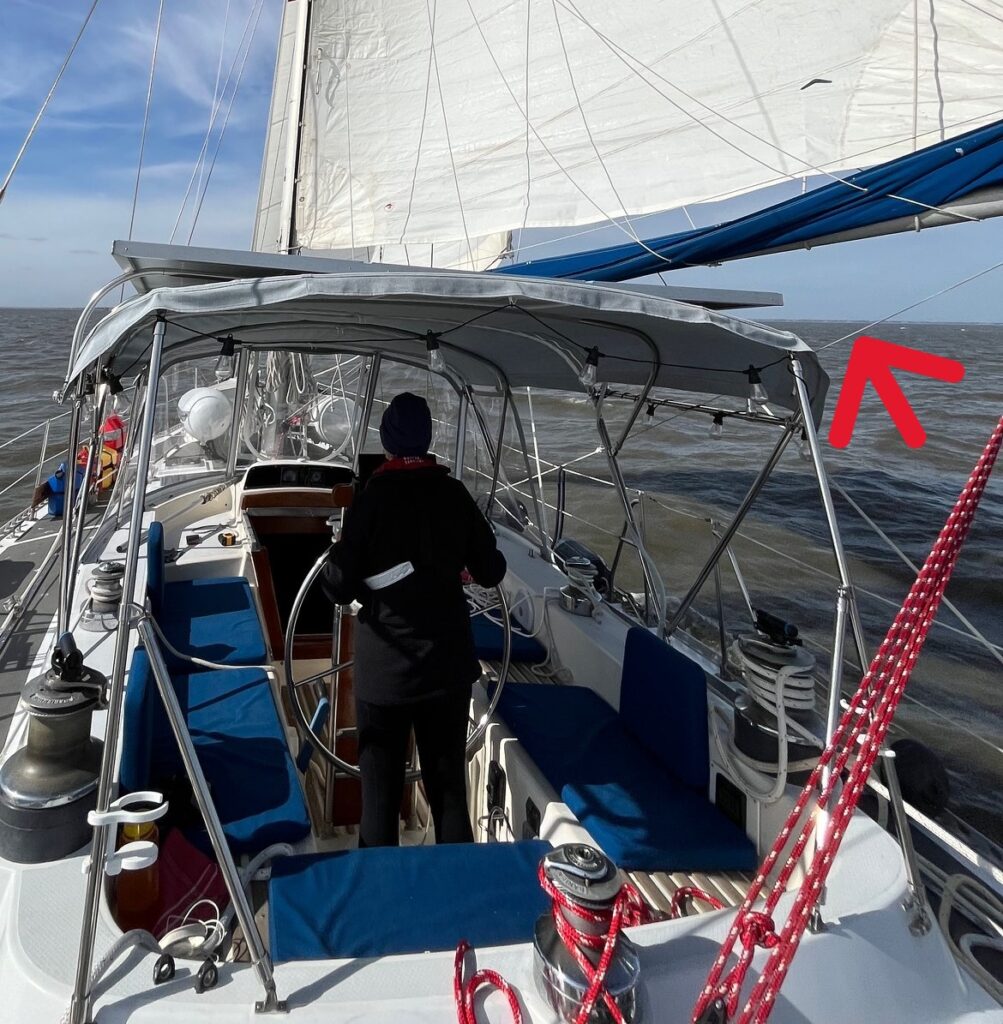
Next up was the preventer. This is a line that runs from the end of the boom to the deck to keep the boom from swinging across the boat if the wind suddenly shifts. That’s called gybing and it can be bad-really, really bad. As in broken booms and broken heads bad. We don’t want that. Fortunately, that was pretty low on the suspense meter. It’s a line. It worked. Easy-peasy.
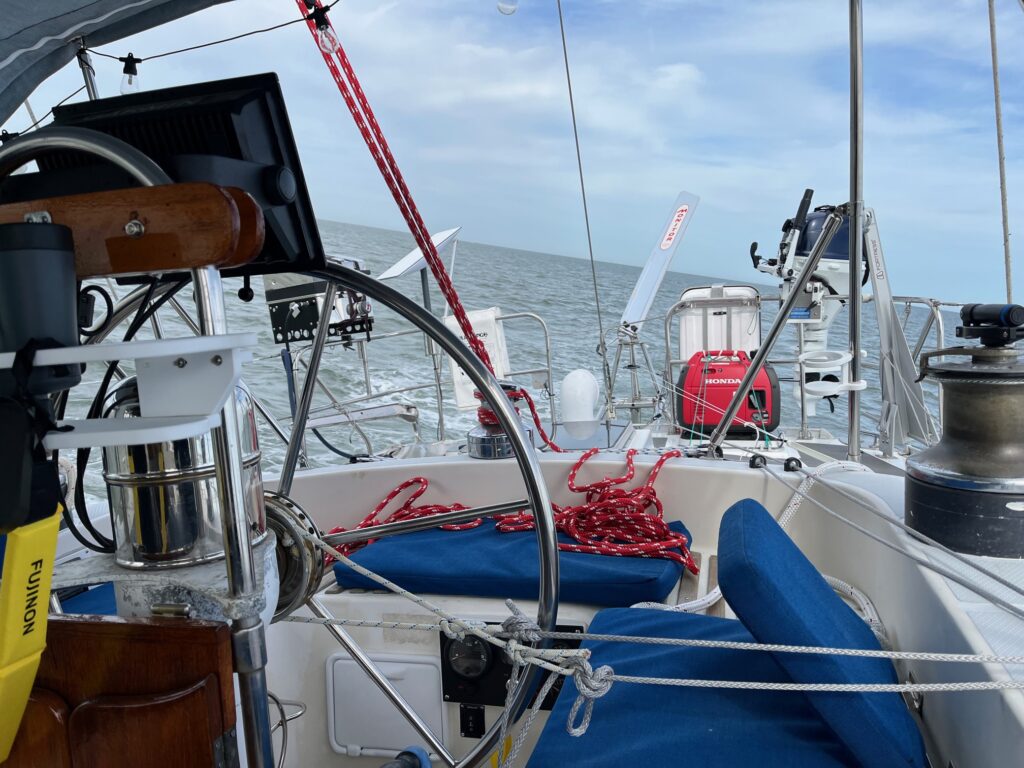
Finally, we tried out both of our autopilots. Yep, we have two. One is electronic. That’s pretty easy-push the button and the computer tells the hydraulic ram to turn the rudder. It worked fine. The downside is that it uses electricity, which we try to conserve. Our other autopilot is a windvane and it’s pretty cool. There’s a vane at the back of the boat attached to a mini-rudder on a pendulum with control lines running to the wheel at the helm. The windvane senses the wind direction and moves the wheel to always keep the boat on the same heading in relation to the wind. Upside? No electricity needed. Downside? If the wind shifts, you are suddenly going somewhere else. We got it hooked up and it actually worked! Shocking. That was all the stuff checked off the list. After that, we just sat back and enjoyed the ride.
And that means, we think, that it’s time. We’ve re-provisioned. We’ve tested all the systems. It looks like we’ve got a weather window opening on Tuesday. So that’s when we plan to leave. We will head south. We’re planning to sail from here to West Palm Beach-that will be 2-3 days. And then we’ll look for a window to cross to the Bahamas. We hope, finally, it’s time to get this adventure started.
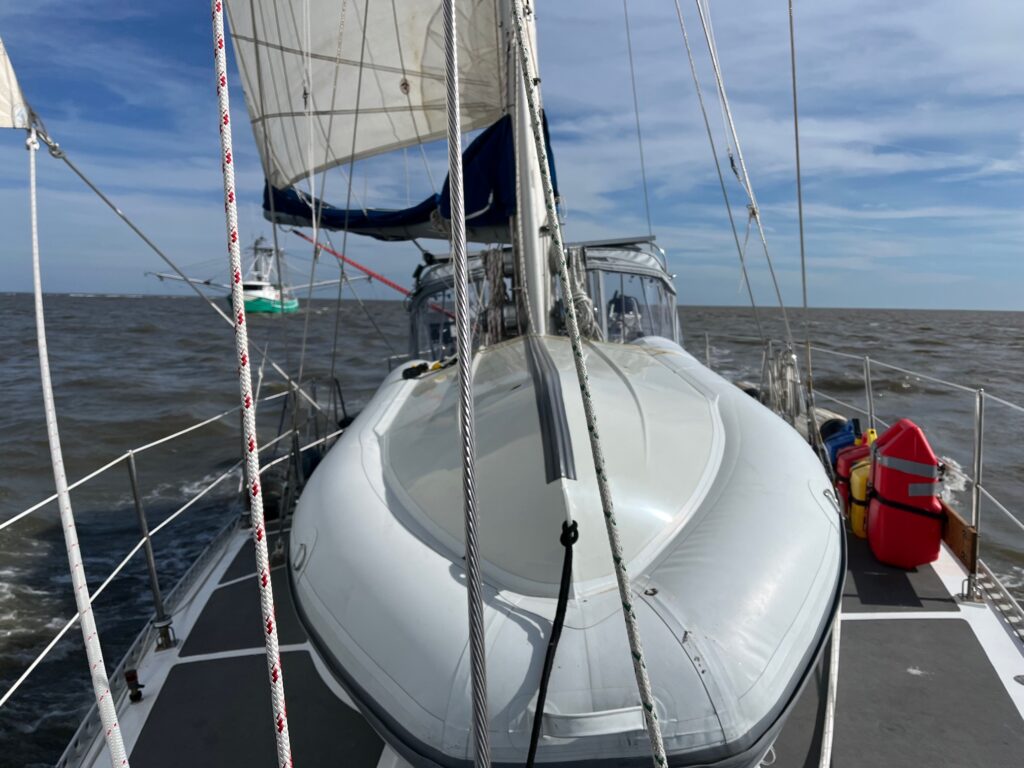
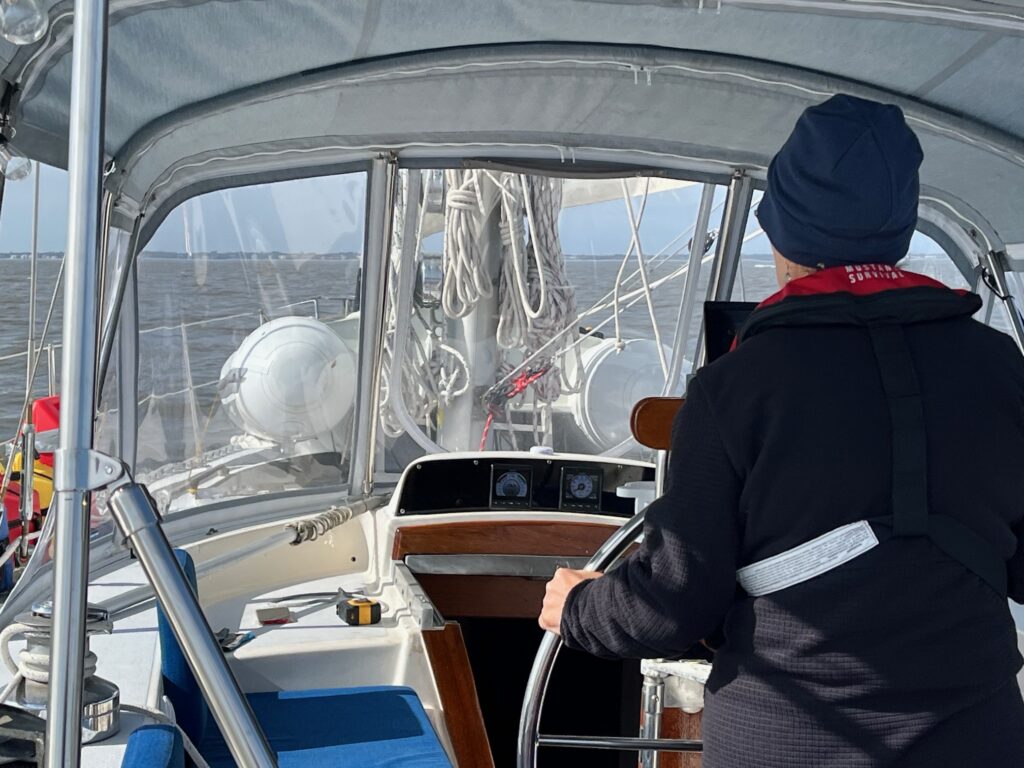
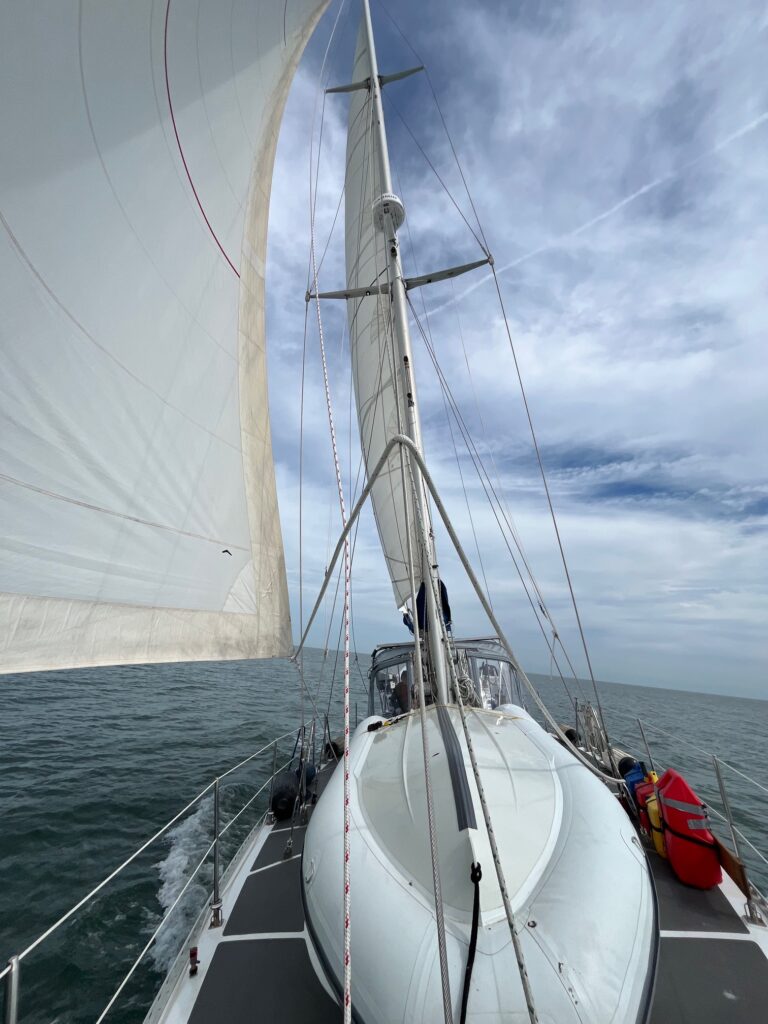
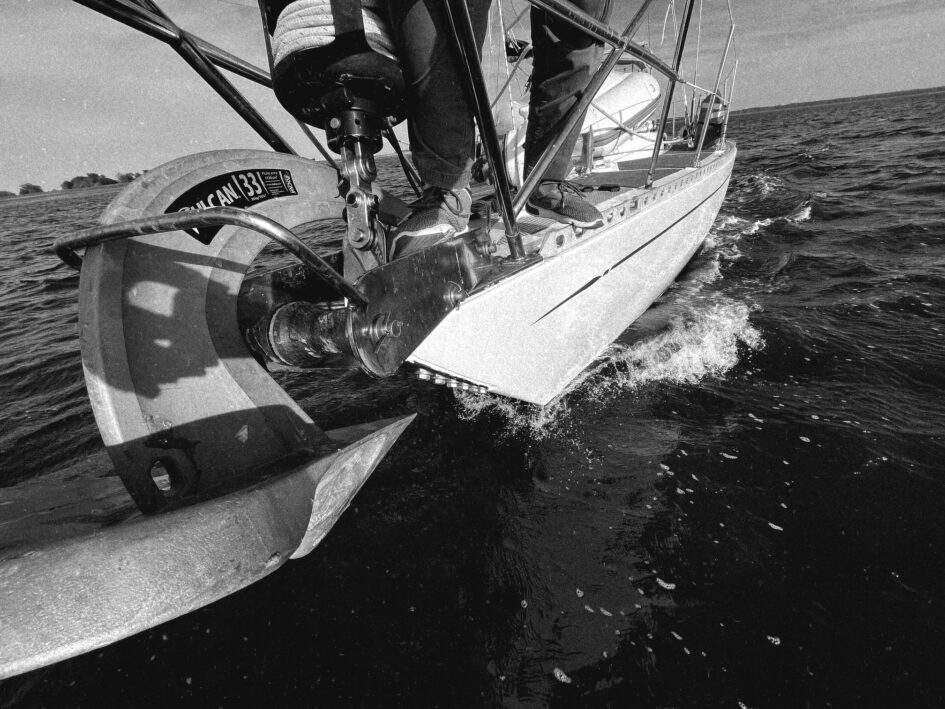
February 11, 2024 at 2:30 pm
What a journey you two have been on. I’m so happy that you are finally getting to reap the rewards for all of your hard work and dedication.
Also, snickering at reefing. Not exactly on brand there.
February 11, 2024 at 11:21 pm
No, not exactly…
February 11, 2024 at 3:27 pm
Whoo Hoo! Finally time to sail the seven seas!
So happy you’ll be able to enjoy the fruits of your blood, sweat, tears, and perseverance!
Can’t wait to start tracking Meraviglia on your grand adventure!
May the seas lie smooth before you.
May a gentle breeze forever fill your sails.
May sunshine warm your face,
And kindness warm your soul.
-Irish sailors blessing
February 11, 2024 at 11:21 pm
Most kind! Thanks Chris!
February 11, 2024 at 3:35 pm
I wish you smooth sailing. You deserve it after all the work you have done.
February 11, 2024 at 11:21 pm
Thanks!
February 11, 2024 at 3:53 pm
Let the adventure part 2 begin! Can’t think of more patient, hardworking, gracious people who deserve some fun!
February 11, 2024 at 11:20 pm
I don’t know what we “deserve” but we’re hoping for some grace!
February 11, 2024 at 4:53 pm
I am so excited for both of you, after all you have been through these past months you deserve a wonderful adventure. May God bless you and keep you safe during your travels.
February 11, 2024 at 11:20 pm
Thank you!
February 11, 2024 at 7:06 pm
I knew absolutely nothing about sailing prior to enjoying your journals…..I still know very little about sailing, but at least if someone began to describe something about or on a sailboat, I now might have an inkling about what they are talking about!!
SO happy for the two of you that you’re finally about to get to set sail!!! CONGRATS and Happy and SAFE sailing!
February 11, 2024 at 11:18 pm
Thanks!!
February 11, 2024 at 9:08 pm
As Jodi would say whoo hoo. We’ll be following. Have a great trip.
February 11, 2024 at 11:18 pm
Thanks!